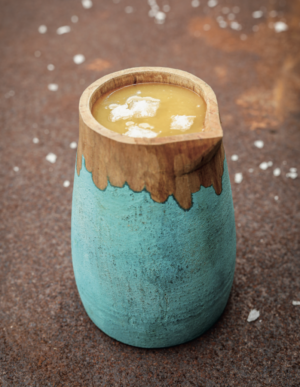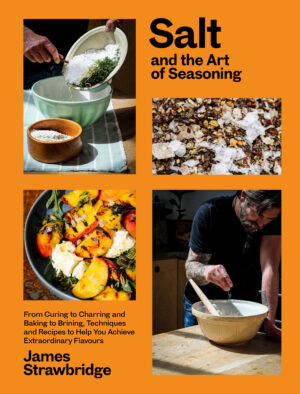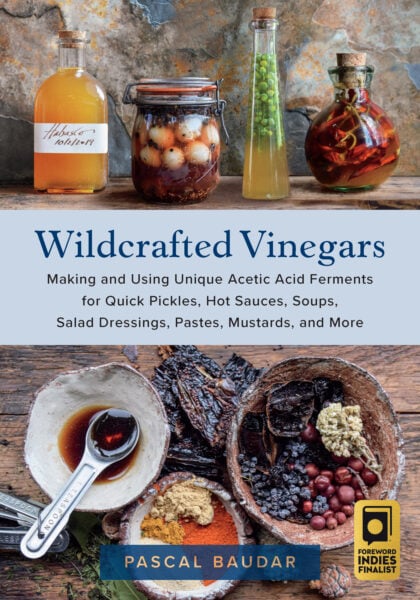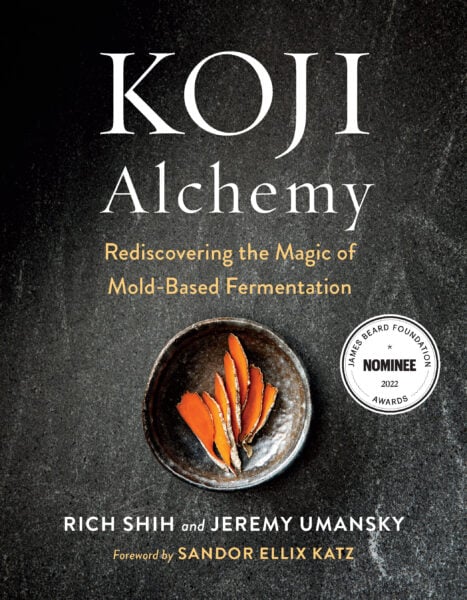Sweet & Salty: Salted Caramel Sauce
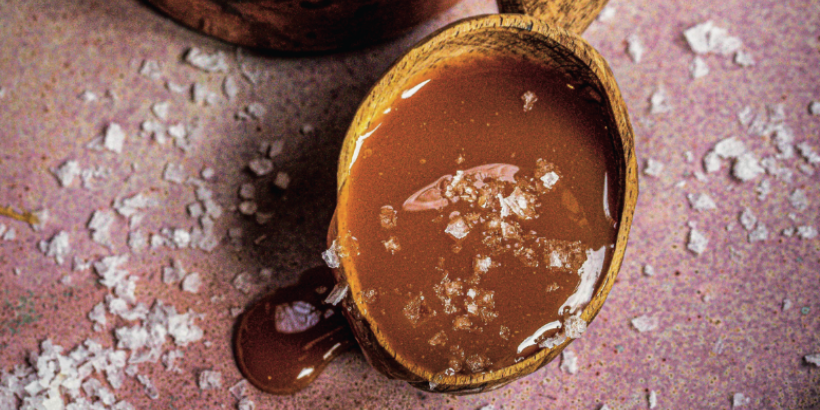
Add a salty twist to your next dessert dish! This salted caramel sauce is a perfect addition to cheesecake, ice cream, and other decadent desserts.
The following is an excerpt from Salt and the Art of Seasoning by James Strawbridge. It has been adapted for the web.
The Salted Caramel Craze
We have pastry chefs and chocolatiers to thank for the salt caramel craze that started nearly fifteen years ago and still shows no sign of slowing down. Salt accentuates sweet flavours. A small dash of salt brings out the caramelised toffee notes in brown sugar. To me, it also makes cacao and chocolate taste richer, less bitter and more balanced.
RECIPE: Salted Caramel Sauce
- Tip the sugar into a heavy-based saucepan. Stir in 2 tablespoons of water and heat over a medium heat until dissolved.
- Turn up the heat and cook for 4–5 minutes until you have a brown caramel (it should have reached around 121°C/250°F).
- Take off the heat and stir in the cream and butter until combined. Stir in the salt.
Serve warm, or leave the sauce to cool, then store in a sealed jar or an airtight container in the fridge. Unopened, it will keep in the fridge for up to 1 month.
Once opened, keep refrigerated and use within 1 week. It is best reheated gently in a pan to serve warm.
This sauce is delicious served with ice cream, drizzled over a baked cheesecake or used as an ingredient in desserts.
Recommended Reads
Recent Articles
Chances are, you’ve seen cattails growing on the edge of your local lake or stream at least once or twice. Instead of just passing these plants, try foraging for and cooking them to create delicious seasonal dishes! The following excerpt is from The New Wildcrafted Cuisine by Pascal Baudar. It has been adapted for the…
Read MoreGarlic mustard: while known as “invasive,” this plant can be consumed in its entirety and has great nutritional value. Plus, the garlic-flavor is a perfect addition to any recipe that calls for mustard! The following are excerpts from Beyond the War on Invasive Species by Tao Orion and The Wild Wisdom of Weeds by Katrina…
Read MoreOh, honeysuckle…how we love thee. If only there was a way to capture the sweet essence of this plant so we could enjoy it more than just in passing. Luckily, foraging and some preparation can help make that happen! Here’s a springtime recipe that tastes exactly like honeysuckle smells. The following excerpt is from Forage,…
Read MoreIntroducing…your new favorite brunch dish! This whole broccoli frittata is packed with fresh, wildcrafted flavors that are bound to help you start your day off on the right foot. The following is an excerpt from The Forager Chef’s Book of Flora by Alan Bergo. It has been adapted for the web. RECIPE: Whole Broccoli Frittata…
Read MoreWondering where to forage for greens this spring? Look no further than hedges, which serve as natural havens for wild greens and herbs! The following is an excerpt from Hedgelands by Christopher Hart. It has been adapted for the web. Food from Hedges: Salads and Greens Let’s start by looking at all the wild foods…
Read More

